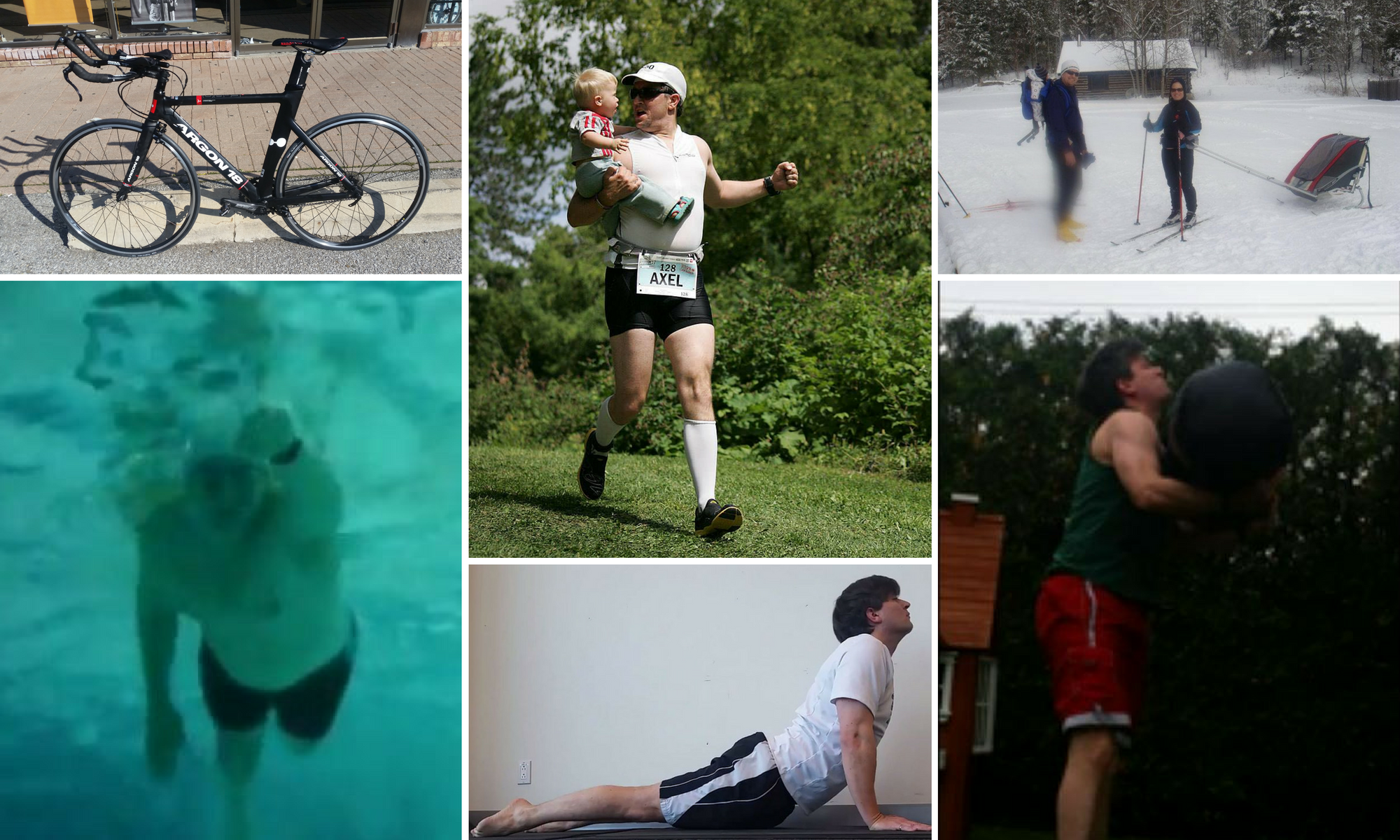Here lies Axel “Iron Rogue” Kussmann. Loved by the best of us, barely tolerated by the rest of us. Drowned in the moonlight, strangled by his own bra died by exhaustion.
This training program may be too much for me; in fact, I’m nursing a pulled right calf muscle as I write this (a Finding Nemo frozen gel pack stuck under a compression sleeve). When I wake up tomorrow I’ll know how bad it is. When I look at the weekly totals it doesn’t seem that bad (though those don’t include warm-ups – the calf got yanked trying to do “butt kicks” for my run warm-up), but you’ll see there are 3 workout days, which apparently is due to me designating Thursday as a day off.
I’m not posting to complain though – that’s not the informative writing I strive for, but to tell you about a cool feature of the Tridot system. When I was putting in initial data like age, height and weight, I also filled out a questionnaire regarding my swimming.

Based on these answers and stroke rate (which gets updated from Garmin data), Tridot has diagnoses me as a combination of different types. I am:
- An “Overglider” (55%) – “As an Overglider, you’re likely over thinking your swim form and trying to stay streamlined at the expense of generating propulsion. Swim speed is Distance per Stroke (DPS) x Stroke Rate (SR)–not just DPS. It’s likely you’ll see solid improvements by focusing more on increasing your stroke rate and generating more propulsion even if you sacrifice your streamline a little. Remember that the most streamlined gliding position doesn’t have any propulsion. Make the mental shift from pursuing only form to pursuing fitness too. Work on your prescribed drills, and you’ll find the right balance.”
- An “Overkicker” (30%) – “As an Overkicker, your able to swim at least at a moderate pace and may not perceive the ‘need’ for much form improvement. However, with a little more emphasis on generating propulsion form your front quadrant and reducing your kick you’ll be able to swim further, faster, and with less energy. Focus on each of your prescribed drills and be open to re-thinking and re-learning how you swim.”
- A “Lightweight” (25%) – “As a Lightweight, you’ll need to really focus on your ooomph and confidence. You may not have much experience in the pool, but that won’t be true for long. Focus on making small improvements each session. Try to relax in the water and focus on strong execution of your prescribed drills. Much of your improvement will come from having a positive mindset as you go into each session. Swimming is not ‘natural’ for humans. It’s learned. You can learn to be a great swimmer!”

The percentages reflect a degree of confidence in the diagnosis, which is why they don’t add up to 100%. The other types (which aren’t a match for me) are:
- “Tarzan” – “As a Tarzan, you’ll need to learn to rely less on your strength and athleticism and more on skill and technique. As you execute your prescribed drills, learn to work with the water rather than fighting against it. Focus on reducing drag and having a long, balanced body position. Relax and let your body glide through the water. Improving your swim form can take time. It’s often not a matter of more effort, rather it’s patience as you repeat the movements (drills) over, and over, and over until they come naturally. “
- “Swinger” – “As a Swinger, you’re already a relatively fast swimmer. Understand that the Swinger form isn’t a ‘lesser’ form than the Classic. You can achieve great results with either. The amount of ‘form correction’ you’ll want to pursue will be relative to your fitness and results. If you’re already turning in strong swim performances and are not experiencing shoulder pain, you may not want to change too much. Work on your prescribed drills as a Classic would to maintain and refine your form not overhaul it.”
- “Classic” – “As a Classic, you’re already a very strong swimmer. You’ll always want to watch that bad habits don’t creep in and impact your form. Don’t take your swim form for granted and neglect doing the drills that are prescribed in your swim sessions. As a triathlete, you will do well to spend time working on open-water skills such as sighting and drafting.”
I’ve noticed they put a lot of “sink-downs” in my warm-ups. These are for getting more comfortable in the water – you empty your lungs and let yourself sink down to the bottom. These are to be immediately followed by swimming a short interval. I think the idea is to get me more used to swimming with less air in my lungs – I’m probably spending a lot of time getting more air in than I strictly need and it’s hurting my stroke rate. I also recently got to play with my head position; looking less up seemed to help me be more efficient but the stroke data didn’t look radically different over the short intervals I got to play with that aspect.



























